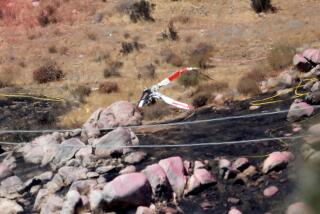The crucial questions at the heart of the Kobe Bryant helicopter crash investigation
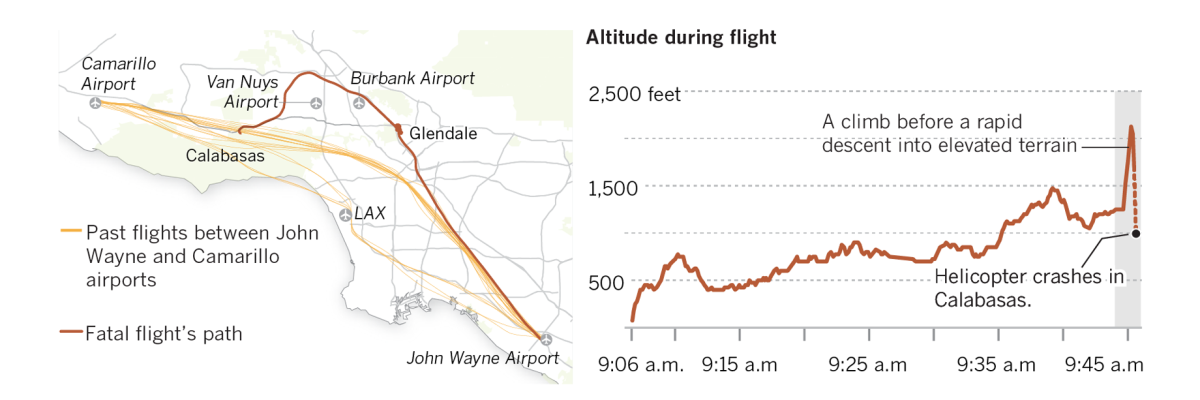
There is no black box recording.
The audio transmission released so far does not cover the actual moment of the crash.
And the impact of the crash sent debris scattered over a huge area.
These are some of the impediments the National Transportation Safety Board is facing as it investigates why a helicopter carrying Kobe Bryant and eight others crashed into a hillside in Calabasas, killing all on board.
The probe is still in its early stages, and a final determination is months away.
At its heart are some basic questions: Why was the pilot flying so low in the moments before the crash, and why could the chopper not clear the hillside?
Here’s what we know so far:
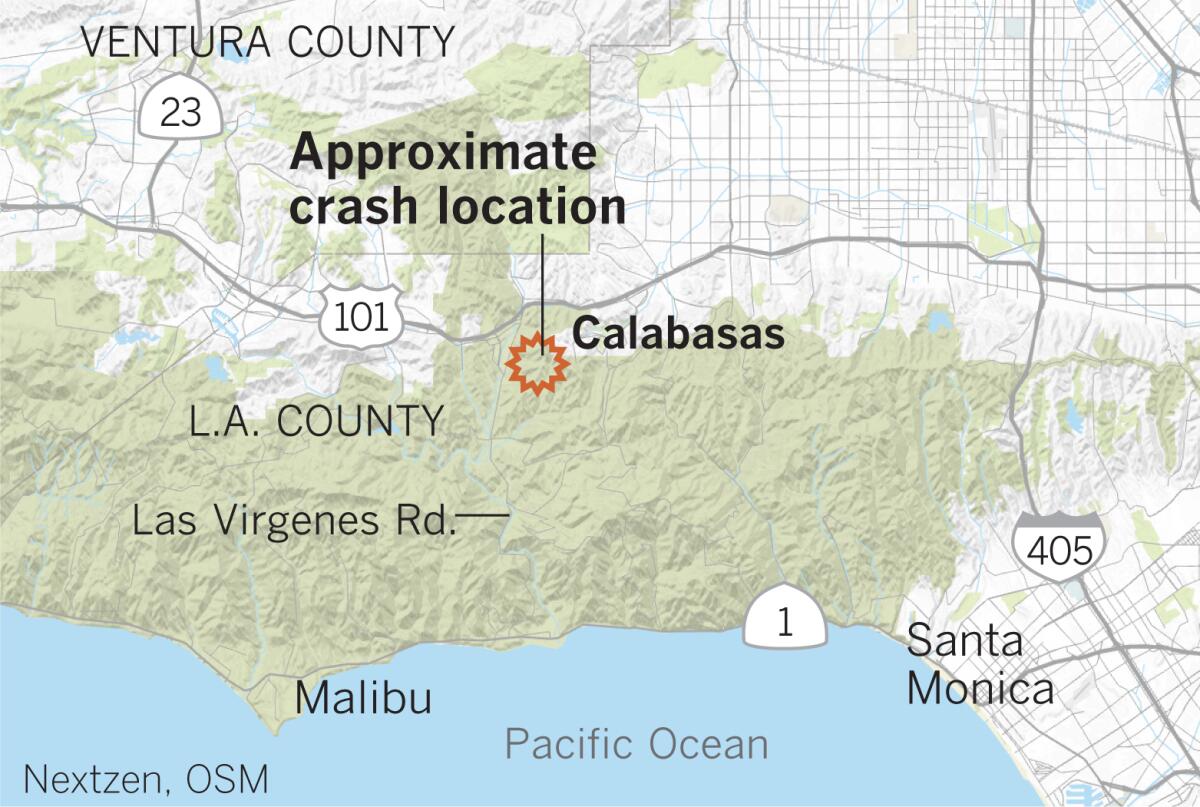
What have investigators learned?
The biggest revelation Monday involved the path of the helicopter.
Just before the crash, the pilot rapidly ascended to avoid a cloud layer, NTSB investigators said.
Jennifer Homendy said the pilot, who was flying from Orange County to Ventura County, requested special visual flight rules, which allow pilots to fly under 1,000 feet. A marine layer had settled over the region Sunday morning, and some areas were shrouded in fog.
Homendy said it remained unclear why the helicopter slammed into the hillside. Debris from the crash was scattered across 600 feet, she said.
“It was a pretty devastating accident scene,” she added. “There is an impact area on one of the hills, and a piece of the tail is down the hill on the left side of the hill. The fuselage is on the other side of that hill. Then the main rotor is about hundred yards beyond that. The debris field is about 500 to 600 feet.”
Kobe Bryant’s death live updates
What was the path of the flight?
The chartered helicopter left John Wayne Airport on Sunday morning when Bryant, his 13-year-old daughter, Gianna, and six other passengers boarded the flight for a basketball tournament in Thousand Oaks.
A half-hour later, they were flying over thickening clouds in the San Fernando Valley. The pilot was worried enough to ask flight controllers to keep track of them. As he approached the hills of Calabasas at 150 mph, the tower radioed him, telling him he was too low to be seen on radar.
The pilot began to climb, rising 765 feet in 36 seconds, enough to clear the nearby hills.
But the Sikorsky S-76B suddenly veered off course and descended rapidly. The twin-engine aircraft dropped 325 feet in 14 seconds, reaching 176 mph before losing contact with air traffic control.
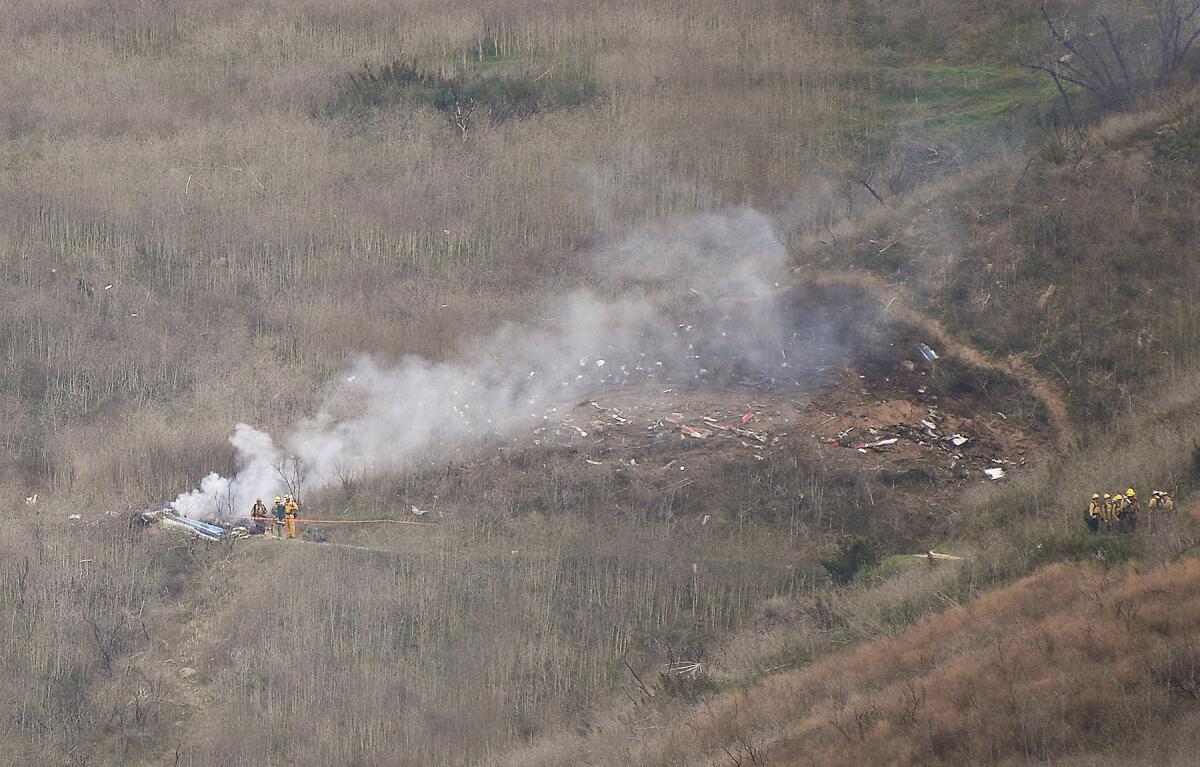
What is the focus of investigators?
Right now, the investigation into the crash is wide-ranging, including the examination of mechanical issues, the history of the pilot and the foggy weather. The NTSB has asked people who were around the crash site Sunday morning and took photos of the fog to send them to investigators.
“We are not just focusing on weather here. We take a broad look at everything around an investigation, around an accident — we look at man, machine and the environment,” Homendy said.
The investigation will have to determine whether the pilot should have been flying in the weather, she said, although she stressed there is no criminal investigation.
The FBI is helping with the probe, which is common procedure.
The NTSB will be in Calabasas for several days, but a final determination of the cause of the crash will be made much later.
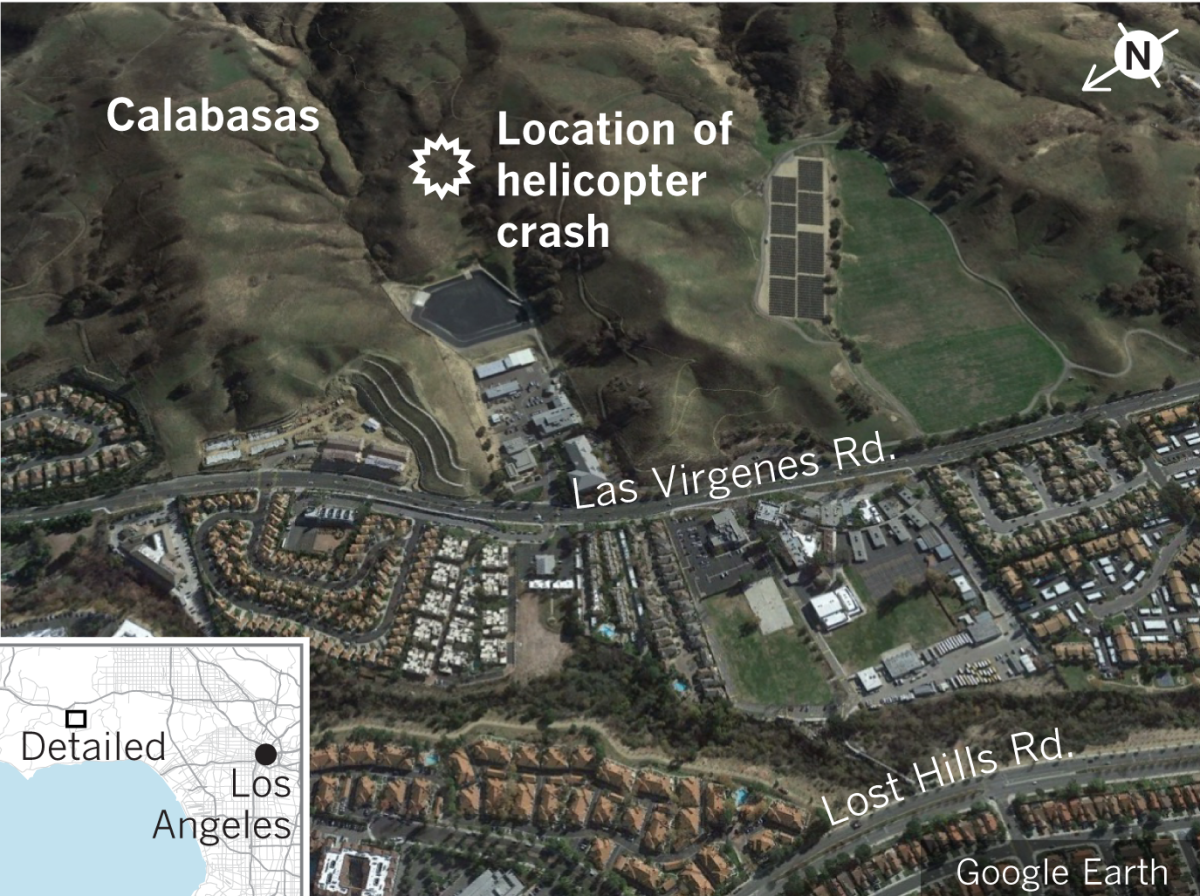
What do we know about the weather?
Parts of Southern California were enveloped in thick fog as the helicopter made its way north. During the flight, the pilot noted he was flying under “special visual flight rules,” which allows a pilot to fly in weather conditions worse than those allowed for standard visual flight rules, according to radio communications between the air tower and the aircraft. At some point during the flight, the pilot apparently requested “flight following,” a process in which controllers are in regular contact with an aircraft and can help them navigate.
The tower is heard telling the pilot the chopper is too low for flight following before the conversation ends. There did not appear to be a distress call.
A visual flight rules flight “is based on the principle of see and avoid.” When operation of an aircraft under visual flight rules isn’t safe, often because of inclement weather, a pilot can opt to fly under instrument flight rules. During this type of flight, the pilot navigates only by reference to the instruments in the aircraft cockpit, according to the FAA.
“[Pilots] fly VFR when and if weather conditions allow, although they can choose to fly on an IFR flight plan at any time,” said Ian Gregor, a spokesman for the FAA. “Also, it’s always up to the pilot to make the decision whether to fly VFR and to ensure the safety of the flight and adherence to federal aviation regulations.”
More to Read
Sign up for Essential California
The most important California stories and recommendations in your inbox every morning.
You may occasionally receive promotional content from the Los Angeles Times.


